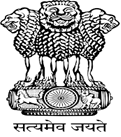
Statement by India
at the Meeting of Member States to review the first draft of Polio Transition Planning Report at WHO, Geneva, delivered by Dr. Sumit Seth First Secretary on 28 April, 2017
Thank you, Mr. Chairman:
We would like to thank the WHO Secretariat for providing a broad overview of the first draft of the report that will be submitted to the 70th World Health Assembly, delineating the programmatic, financial and human-resource-related risks resulting from the current winding down and eventual discontinuation of the Global Polio Eradication Initiative.
The Delegation of India would like to specifically highlight the reasons why the National Polio Surveillance Programme (more commonly known as NPSP) structure needs to be maintained at an optimal level and the risks involved if it is winded down prematurely.
As a step to India’s commitment to the polio eradication, Government of India initiated the Pulse Polio Programme in the year 1995. To collect information regarding polio in India, to guide the program in the right direction, India’s Ministry of Health in 1997 under the aegis of WHO created National Polio Surveillance Project (NPSP). The key objective to establish NPSP was to put in place a sensitive surveillance system for poliovirus in India.
Over the period of time, the NPSP structure not only built polio surveillance system of Global reference standards, but also played critical role in monitoring polio campaigns and ensuring high coverage in India. NPSP also played critical role for polio vaccination of international travellers, environmental surveillance, undertaking research work for polio in the country.
Subsequently, the WHO-NPSP structure was involved in Measles, Rubella and Congenital Rubella Syndrome control activities in India. As per India Expert Advisory Group recommendations, Measles Rubella campaign is time-bound activity and high coverage is necessary to achieve the goal of measles elimination and rubella control by 2020 in line with resolution by all South East Asian Region countries in 2013. NPSP also built on Measles-Rubella surveillance in country utilizing Acute Flaccid Paralysis Surveillance System.
Apart from this, NPSP is assisting in various new initiatives of Government of like Mission Indradhanush, new vaccine introductions (e.g. Penta, IPV, Rota) and lab-linked Vaccine Preventable Diseases surveillance where NPSP SMOs are providing technical support through planning, capacity building of health personnel at all levels and monitoring of these initiatives.
Mr. Chair:
As NPSP is supporting Government of India beyond its initial mandate of polio functions, its workload has increased manifolds. Therefore, rapid scaling down of NPSP structure as part of transition planning may not only risk polio programme but also other activities intended to strengthen immunization programme on existing NPSP structure. Government of India strongly believe that NPSP structure is critical and should be maintained under WHO.
To sum up, maintaining NPSP structure at optimum level is critical for India’s immunization programme as the project is not only continuing activities for polio but also participating in other important areas of immunization programme. In view of it, it is we firmly believe that the NPSP structure must be allowed to continue to function and support India’s immunization programme under WHO.












